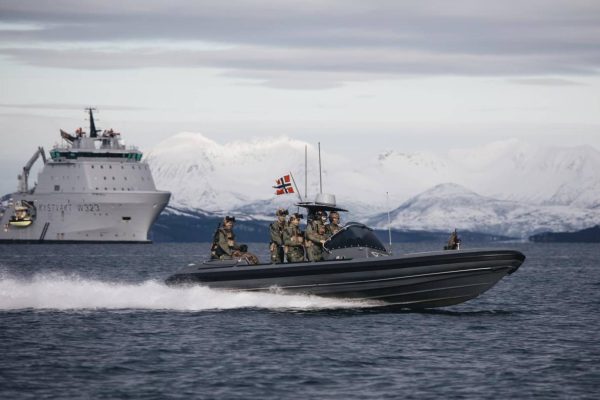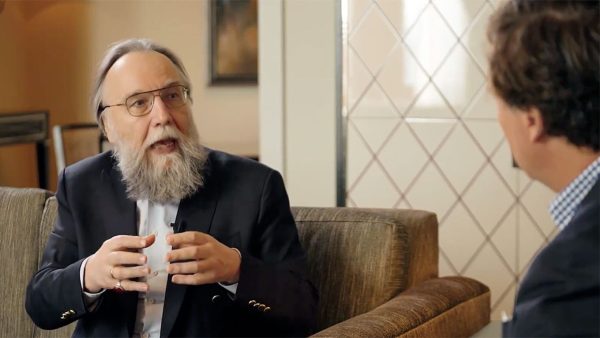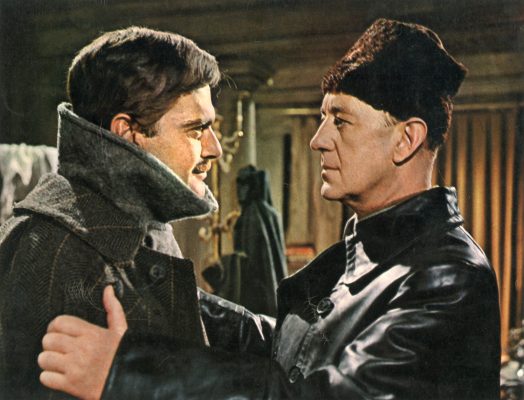Ukrainians commemorated the 90th anniversary of the Holodomor famine-genocide at the end of November, lighting candles across the country (and beyond) to commemorate the at least 3.9 million victims who died as a result of Soviet policies in Ukraine.
The man-made famine was resolutely ignored and denied by the Soviet Union, with then-Soviet foreign minister Maxim Litvinov outright denying its existence and the regime banning any mention in the press. Foreign media, which tended to remain in Moscow (and some of whom were Soviet sympathizers), were prevented from traveling to Ukraine, apart from the Welsh reporter, Gareth Jones, who was later thought to have been murdered by Stalin for his trouble. Ukraine’s story was thereby seen through the Kremlin’s prism, which distorted events beyond recognition.
Not much has changed. While Ukrainians have been able to tell the truth of what happened, the Russian state continues to lie. There is once again an attempt to rewrite Soviet depredations in Ukraine and elsewhere, as it seeks to erase the USSR’s genocidal policies in its occupied republics. Since the full-scale invasion of February 2022, however, this pattern has become more sinister.
Masked Russian occupiers vandalized and destroyed 14 monuments to the victims of the Holodomor in Henichesk district, in Ukraine’s southern Kherson region, as the anniversary approached. The photos documenting acts of vandalism were released by the local occupation administration, suggesting they wanted news about this action to spread.
In the images, the men have their faces blurred, and armed with sledgehammers, destroy plaques and monuments, leaving either a pile of rubble or a plaque-less memorial in their wake, according to Ukraine’s Most. Alongside the published photos, they refer to the Holodomor as a “so-called” famine.
And just in case anyone missed the point about Russian hostility to the remembrance of Kremlin mass slaughter, the regime launched a huge wave of 77 drones aimed mainly at Kyiv on the eve of the commemoration. The attack marked a substantial spike in the current Russian attack pattern, making clear the intention to mark the event.
“The enemy is intensifying its attacks, trying to destroy Ukraine and Ukrainians,” Deputy Head of the Office of the President of Ukraine Oleksii Kuleba wrote in a Telegram post at the time, “just like 90 years ago, when Russia killed millions of our ancestors,” he said.
Russia is making a much broader attempt to rewrite the past. At home, history textbooks were distributed from the beginning of the school year that attempted to present Russia as a nation of “heroes”, and claimed that “Russia did not start any military actions but is trying to end them”.
Furthermore, in Russia proper, memorials to eastern European victims of Soviet terror are starting to disappear or be edited. Poles have seen their monuments removed in Russia, while those commemorating Ukrainians and Lithuanians have also been affected. The human rights group, Memorial, whose work began with the documentation of Soviet mass graves and which won a Nobel Prize in 2022, had its activities terminated within Russia.
“The Russian government has never been interested in the systematic commemoration of the victims of state violence: most of the memorials erected since the late 1980s have been set up on the initiative of ordinary citizens,” noted Maria Domanska, from Poland’s Center for Eastern Studies.
And, of course, Russia has a long history of visually stamping its presence in territories it aggressively occupies. Take Mariupol, for example. The city had a pre-war population of more than 400,000 and was one of the hardest-hit conurbations during the invasion. Russian strikes reduced a local maternity hospital to rubble last March and are believed to have killed hundreds of civilians sheltering in the local drama theater that same month.
Residents were trapped under the rubble of their own apartments, and many were left with no access to water. While the precise number remains unknown, Russians are thought to have killed more than 22,000 townspeople.
Having razed it, Russia later claimed to be rebuilding it, erasing evidence of war crimes in the process, and renaming streets, with Russians flocking to the city as part of this drive, including the country’s young social media “influencers”, posing dramatically in front of destroyed buildings. Russia has also been sending in “mobile information complexes” to push Russian propaganda in the city. Ukraine says it uncovered plans for the ethnic cleansing of Mariupol.
Hayla Coynash, from the Kharkiv Human Rights Protection Group (KHRP), pointed out that in Mariupol, Russian invaders destroyed the Memorial to the Victims of Holodomor, even fabricating a propaganda video in which “Mariupol residents” proclaimed their support for the monument’s removal. “The alleged aim was to use the granite for construction work. Over a year later, major parts of the city remain in ruins,” she notes.
As the Atlantic Council’s Ian Brzezinski recently commented, Putin’s Russia isn’t just grabbing territory, “he’s trying to literally rewrite Ukrainian identity, rewrite Ukrainian history, he’s trying to impose his vision of what that people is. We haven’t seen an action like that since World War II, and it is genocidal,” he stated.
Between 1931 and 1934, at least 5 million people died of hunger as a result of Stalin’s forced famine in Ukraine. Mass food shortages were the direct result of Soviet authorities’ confiscatory policies and “unrealistically high grain collection targets”. And, as historian Bohdan Klid points out, the Holodomor wasn’t even the USSR’s first famine in Ukraine — there was a lesser-known one in 1928-29.
“In the case of the 1928-29 famine, grain procurements (obligatory deliveries of grain to the state) were conducted and continued in the condition of a poor harvest, due largely to unfavorable climatic conditions,” Klid said. “The state continued collecting grain for a period and even shipping some of it out of Ukraine to meet demands in other Soviet republics, mainly Russia.”
“In both cases, not enough grain was returned (emphasis on the word returned).”
The Genocide Convention of 1948, shaped and formulated after the Holodomor, was influenced by the Soviet Union, as well as South American nations who sought to eliminate the inclusion of “political groups” from its scope (likely because it would be self-incriminating).
In trying to eliminate all forms of national identity in Soviet-occupied and Soviet-administered countries, the USSR could claim that during the Holodomor it was rather targeting the “kulaks as a class”, or “elites” as opposed to nations themselves (the Baltic states, Ukraine, Kazakhstan all suffered the destruction of their cultural identity and local languages during this time – the fact that the USSR was conducting aggression on such a massive scale bizarrely helps it argue against genocide).
However, Lemkin himself, who coined the term genocide, called the famine “the classic example of Soviet genocide”.
And tragically, the Kremlin is once again making food a weapon of its war of aggression. In commemorating the Holodomor, US President Joe Biden drew an explicit parallel between the Holodomor and Ukraine’s position today.
“Russian forces seek to destroy Ukraine’s economy and independence, deliberately damaging fields and destroying Ukraine’s grain storage facilities and ports,” he said. “It is not just an attack on Ukraine’s economic security, it is a cynical assault on food security everywhere.”
Aliide Naylor is the author of ‘The Shadow in the East’ (Bloomsbury, 2020). She lived in Russia for several years and now reports from Ukraine and the Baltic states.
Europe’s Edge is CEPA’s online journal covering critical topics on the foreign policy docket across Europe and North America. All opinions are those of the author and do not necessarily represent the position or views of the institutions they represent or the Center for European Policy Analysis.





